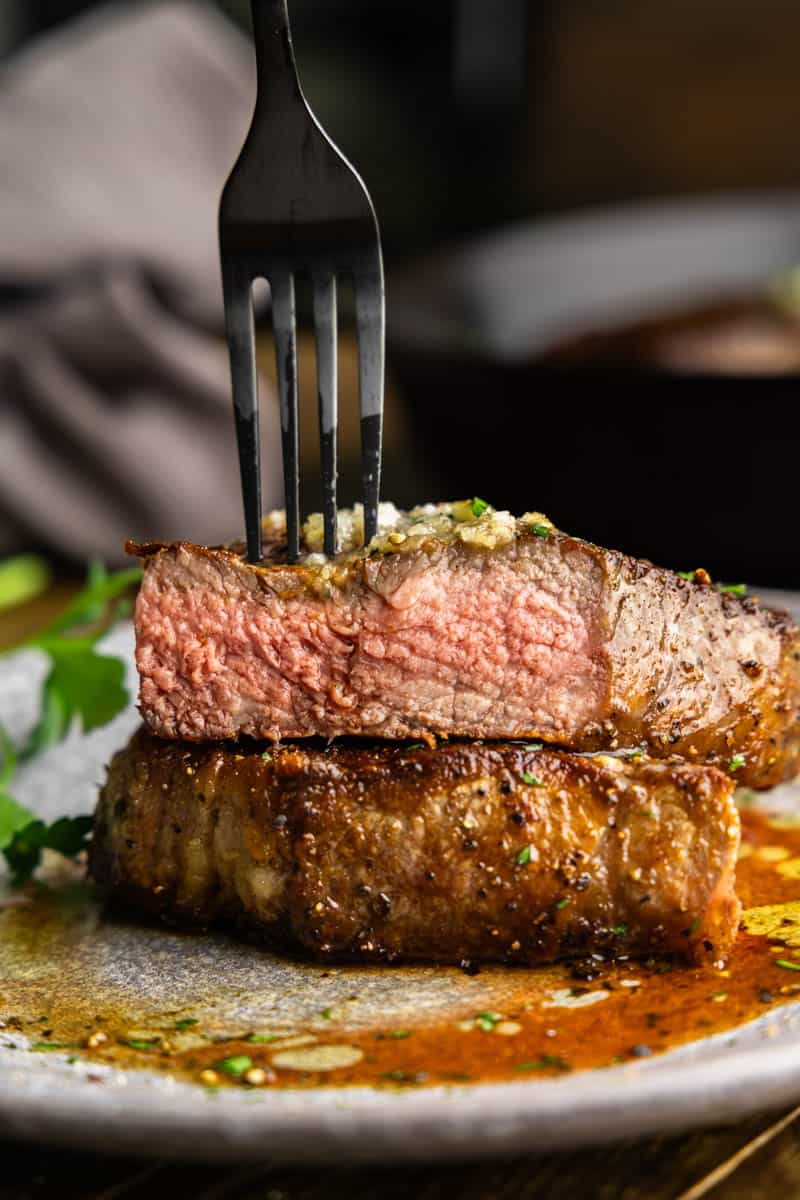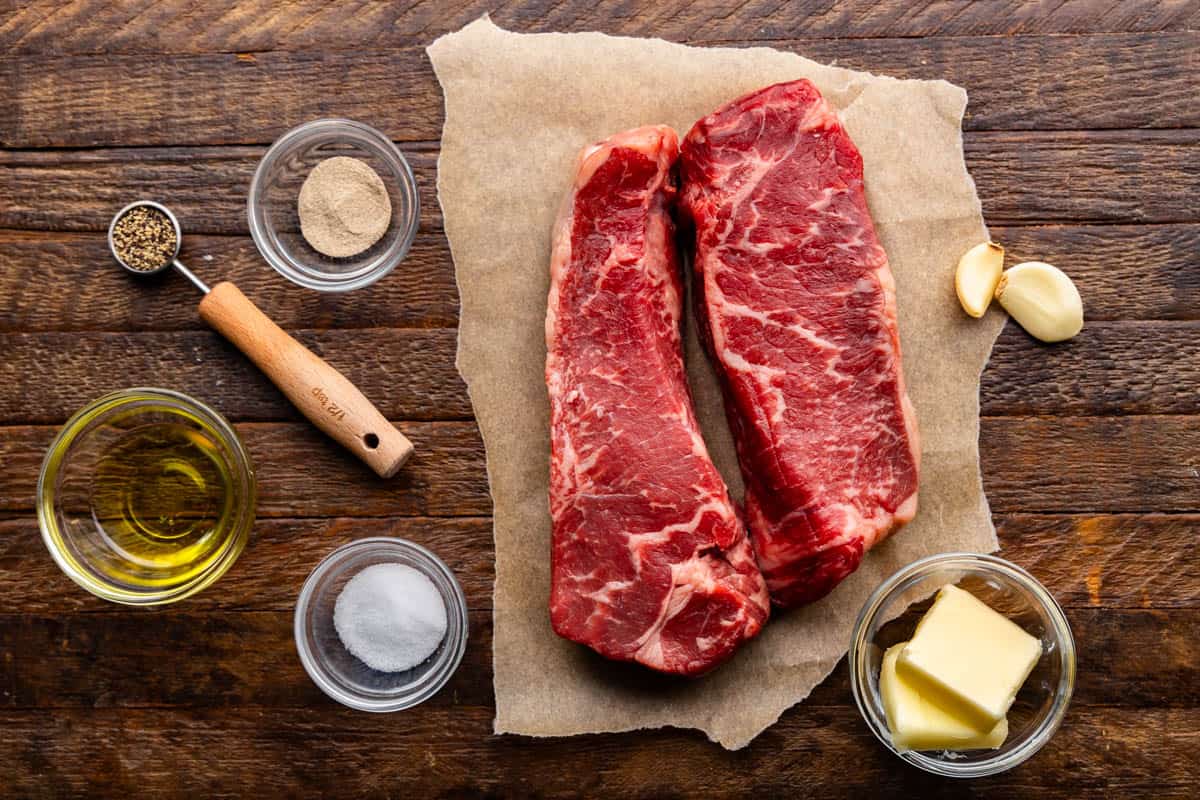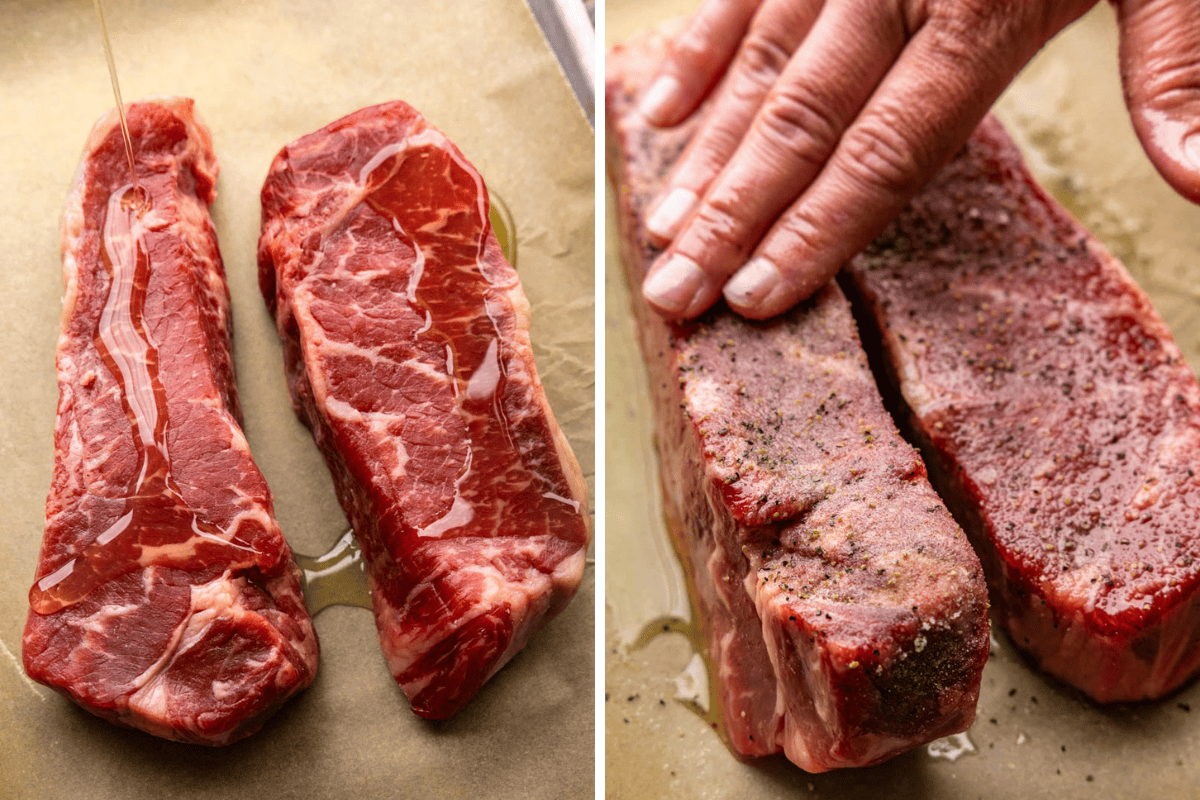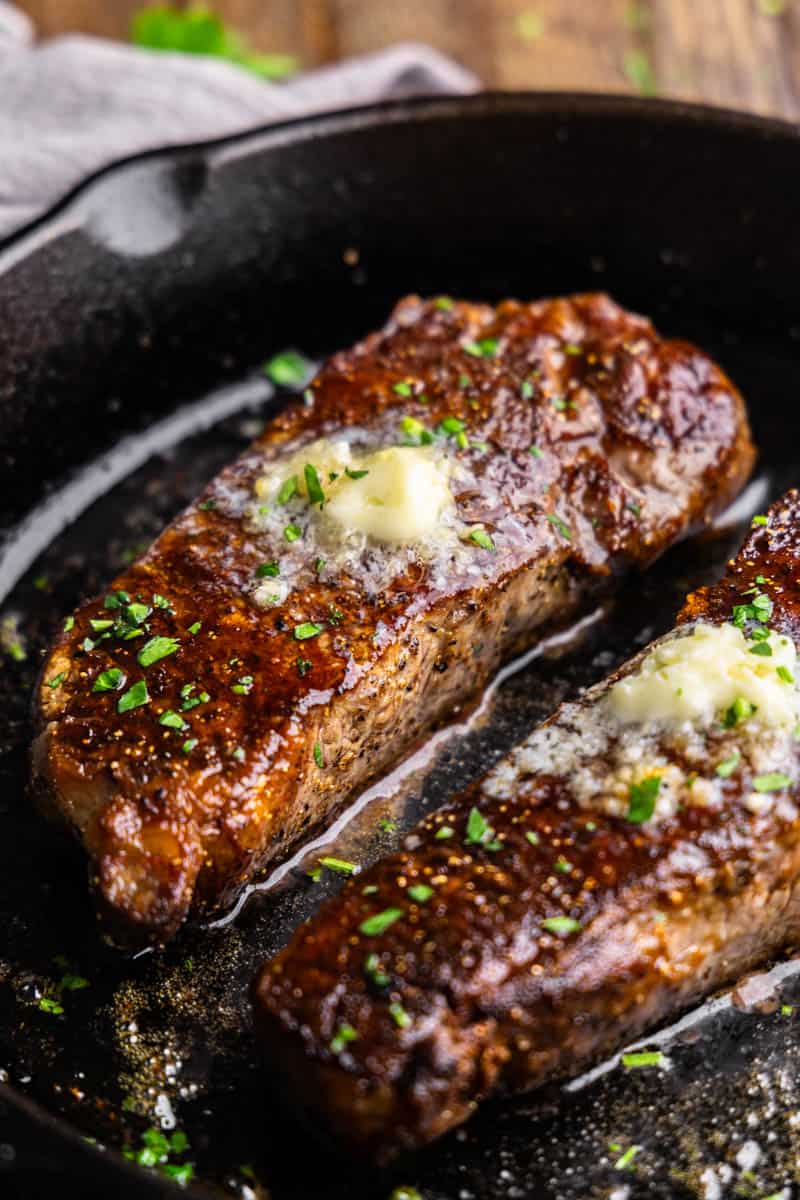As a Steak Cookoff Association (SCA) judge, I have officially judged hundreds of amazing steaks from world champions all the way down to backyard grill heroes. This recipe is my tried-and-true method to get an award-winning steak in your own home. While some might think of cooking a New York strip as intimidating, here you’ll learn how easy it is to make steakhouse-style steaks in well under an hour. Most of that is resting time!
We also have detailed guides for how to cook steak perfectly every time as well as how to master grilled steaks should you need more information.
Why Our Recipe
- We have an official SCA-certified steak judge to teach you everything you need to know.
- No-fail steps for searing, baking, basting, or grilling New York strip steaks to the perfect doneness.

The key to cooking the best New York strip steaks is to keep things simple with just a few quality ingredients treated right. We’ve tried to keep the information here minimal, but if you want a more detailed guide or have any additional questions, be sure to check out our complete guide for how to cook steaks perfectly every time.
Ingredient Notes


- New York Strip Steaks: At least 1-inch thick, with or without the fat trimmed. For the best results, always opt for Choice or Prime-grade New York strip steaks. If possible, purchase your steaks from a trusted butcher or high-quality grocery store known for their meat selection. Sometimes going straight to a butcher can cost less!
- Olive Oil: Or other high-heat oil for searing like vegetable or canola.
- Spices: Salt, both black pepper and white pepper for flavor without too much spice. Keep it simple and let that meat shine!
- Compound Butter: Adding in a resting butter or compound butter takes what is already an amazing steak and knocks it through the roof. Even if you don’t have the nicest grade of beef, this added butter will help fill in the gaps.
Tips for Selecting Your Steak
- Look for Marbling: Marbling refers to the white streaks of fat within the meat. More marbling usually means more flavor and tenderness. Prime grade will have the most marbling, followed by Choice.
- Check the Thickness: For a New York strip steak, aim for a thickness of at least 1 inch. Thicker steaks are easier to cook to the desired doneness without overcooking the exterior.
- Examine the Color: Fresh steaks should have a bright, cherry-red color. Avoid meat that looks dull or has a brownish hue, as it may be old or not as fresh.
- Uniformity: Look for steaks that are uniformly cut. An evenly cut steak will cook more evenly.
- Fat Cap: New York strip steaks typically have a strip of fat along one side. This fat can enhance flavor and moisture during cooking, but if you prefer less fat, you can trim it before or after cooking.
A heavy oven-safe skillet is needed to properly make this New York strip steak recipe. I suggest a classic sturdy cast iron skillet. But any heavy-bottom skillet that can go from stovetop to oven will do.
A good instant read and/or internal meat thermometer is a kitchen must-have. Either will help you achieve that perfect doneness, but I highly recommend using a ThermoWorks brand thermometer. I’ve used them for years and have always been super satisfied with their products.


On The Grill
New York strip steaks are leaner, making them less likely to cause flare-ups while grilling. Preheat an outdoor grill to high heat (about 500 degrees). Sear the steaks for 3 minutes per side. Then, reduce the heat to medium-low and continue cooking with the lid closed until the steaks reach the desired level of doneness (130 degrees F for medium-rare). Once removed from the grill, immediately top with 1 tablespoon of butter each, tent with aluminum foil, and allow the steaks to rest for 5 to 10 minutes before cutting.
Reverse Sear
For thicker steaks, consider the reverse sear method, which involves cooking low and slow to further tenderize the meat. Preheat your oven to 250 degrees Fahrenheit and place a wire rack onto a rimmed baking sheet. Season the steaks as instructed and place them onto the wire rack. Bake in the 250-degree oven until the internal temperature reaches 10-15 degrees below your target. Remove from the oven and sear in oil in a heavy skillet over high heat to form a deep golden brown crust.
Butter Baste
The butter baste method requires a bit more TLC but yields intensely flavorful steaks. Pat the steaks dry and season generously without adding oil. Heat 2 tablespoons of cooking oil in a large heavy skillet over medium-high heat. Add the steak and sear for 2-3 minutes. Flip and sear for an additional 30 seconds before adding 4 tablespoons of butter and any aromatics like rosemary, thyme, or smashed garlic cloves. Tip the pan and use a spoon to baste the steak with the liquids as it cooks. Once the second side has cooked for 3 minutes, flip again and continue flipping every 1 minute, basting constantly, until the desired internal temperature is reached.


What to Serve with Steak
Got leftovers?
If you have leftovers they are terrific for making a cheesesteak slider or quesadilla. Or you can go all out and make the best beef stroganoff of your life!
Storage and Reheating Instructions
Refrigerate: In an airtight container for up to 5 days.
Reheat: Portions of New York strip in a skillet over medium heat or wrap in aluminum foil to retain moisture and reheat in a 300-degree oven for 10 to 15 minutes, just until warmed through.
